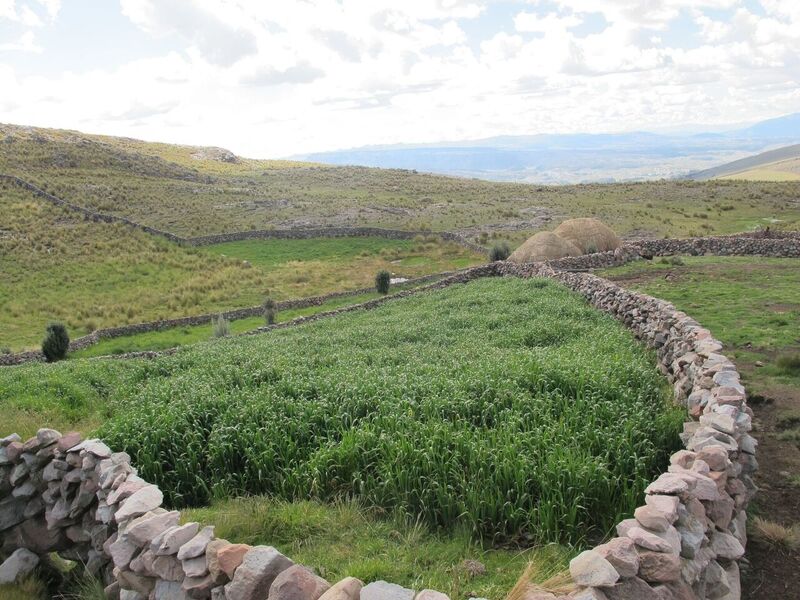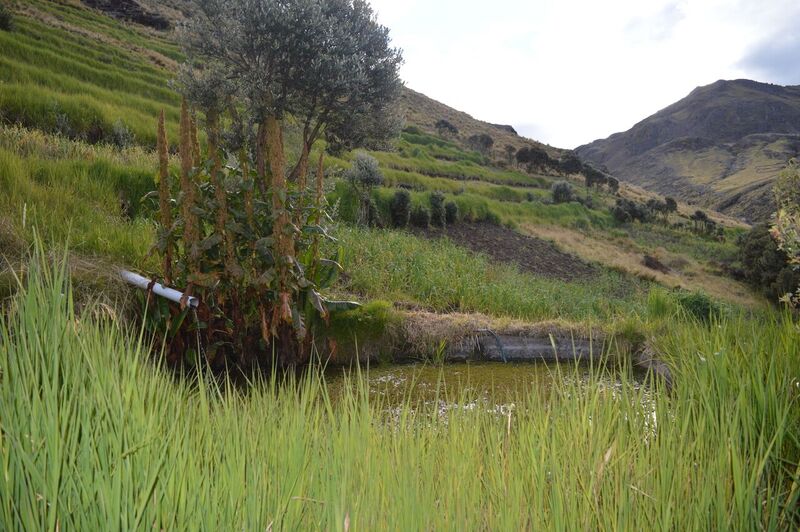


This includes the recovery and conservation of the diversity of cultivated plants and the knowledge related to their cultivation. In the surroundings, the fields and fences are created for animal breeding and to protect degraded areas. Also, practices were developed to increase the vegetation cover and to improve the infiltration and retention of humidity and the runoff in areas adjacent to the lagoons. These include:
- fencing areas without vegetation cover and sowing of native grasses in the communal grasslands,
- silvopastoral practices with fences to control overgrazing in hill areas and communal meadows,
- construction of terraces,
- afforestation and reforestation,
- closings with living fences,
- use of organic material,
- protection and conservation of emergent water springs,
- planting of plants that "call water",
- creation of ponds,
- celebrating the maintenance of water springs and dikes.
Ponds are created through construction of stone dikes with clay cores at the point of convergence of natural drainage or natural vessels in order to store the water that needs to filtrate and recharges the groundwater. (MINAGRI, 2015, b).
Traditional knowledge systems are part of projects that aim at cultural affirmation. It is essential to restore the "mutual aid" groups Ayllus led by the Umas (leaders), mobilizing groups of common interest and enhancing the inherent abilities and roles of women, men, youth, children and the elderly for the recovery of the Andean peasant agriculture which cares for the water, the climate and the territory.
This experience responds to a living and holistic worldview of the Andean peoples, which implies a different way of acting and relating to the territory and its elements. This is what we call mutual accompaniment, which is distinct and very different from the way of intervening in a development project or an irrigation project. It is important to highlight three key elements in relation to the water issue, which must be taken into account when implementing these measures in communities and with indigenous people:
- Take into account the living or "bio-cultural" dimension of the Andean territory. The living dimension of water or personalization of water based on the Andean worldview, local water culture, knowledge and “water breeding” secrets.
- The focus of traditional agriculture, biodiversity in the farm and its dispersion in the territory.
- Reciprocity or social support, community foundation and communal dynamics.